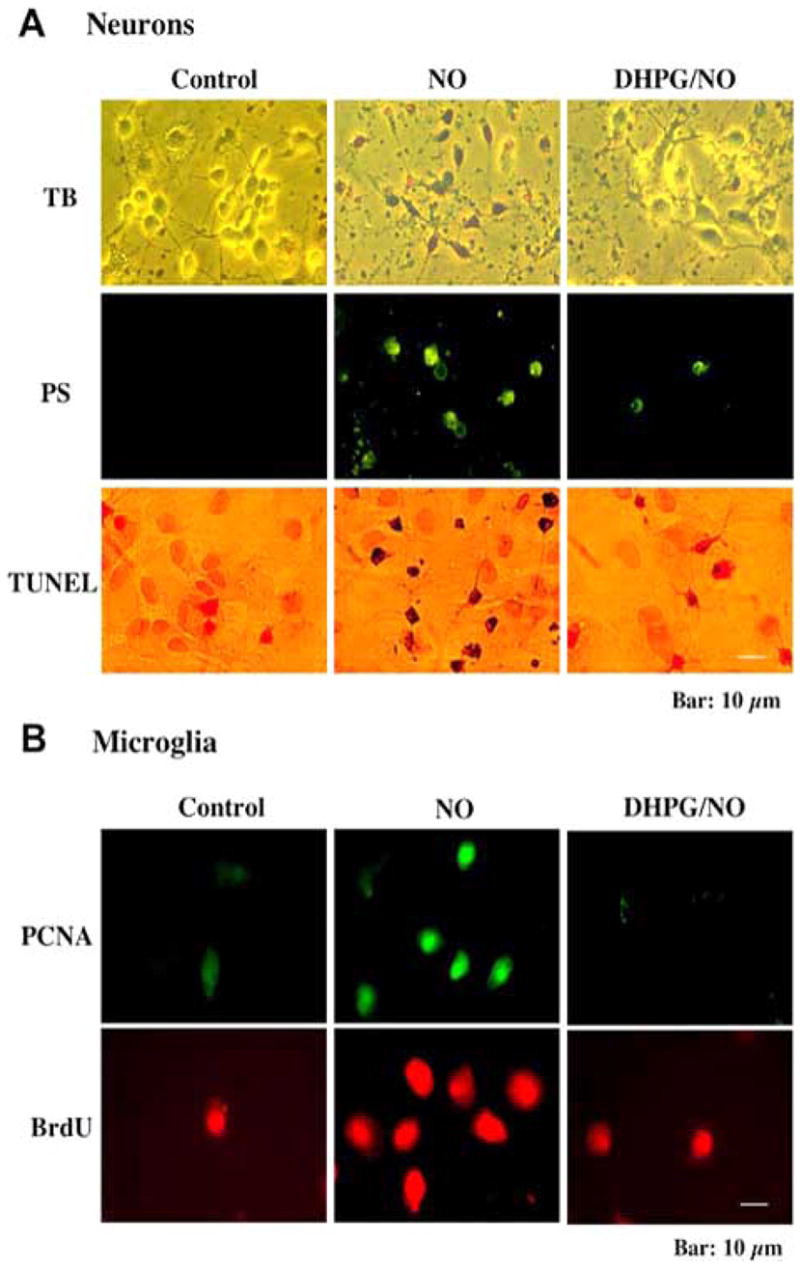Fig. (1).

Activation of group I mGluRs by 3,5-dihydroxyphenylglycine (DHPG) maintains genomic DNA integrity and membrane phosphatidylserine (PS) asymmetry and prevents microglial activation. (A) Representative images illustrate cell membrane disruption with trypan blue staining, DNA fragmentation with terminal deoxynucleotidyl transferase nick end labeling (TUNEL), and phosphatidylserine (PS) exposure with annexin V phycoerythrin labeling in hippocampal neurons 24 hours following nitric oxide (NO) exposure (NOC-9, 300 μM). Pretreatment with the group I agonist DHPG (750 μM) 1 hour prior to the NO insult results in a significant reduction in trypan blue staining, DNA fragmentation, and membrane PS exposure. (B) Representative images of microglia are shown that illustrate increased micoglial activity assessed by proliferating cell nuclear antigen (PCNA) expression or the uptake of bromodeoxyuridine (BrdU) following the application of neuronal media that was exposed to either NO (NOC-9, 300 μM) or NO (NOC-9, 300 μM) plus DHPG. Administration of DHPG (750 μg/ml) one hour prior to neurons exposed to NO subsequently prevented PCNA expression and BrdU uptake in microglia illustrating that mGluR1 activation can block inflammatory microglial activation.
